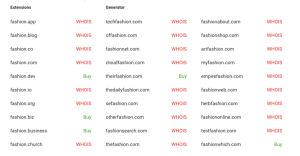Curating isn’t all smooth sailing. Columnist Tamar Weinberg takes a look at how you can curate successfully to become an influencer and strengthen your personal brand.
 Curating content can have a huge impact on your personal brand and thought leadership credibility. By repackaging and posting superb, fresh and memorable content produced by others within your industry, you’re able to position yourself as an in-the-know influencer yourself, share new ideas, expose your perspective to new audiences and build relationships with like-minded industry players.
Curating content can have a huge impact on your personal brand and thought leadership credibility. By repackaging and posting superb, fresh and memorable content produced by others within your industry, you’re able to position yourself as an in-the-know influencer yourself, share new ideas, expose your perspective to new audiences and build relationships with like-minded industry players.
People from large and small businesses alike have harnessed the power of other people’s content to build brand equity, with 80 percent of marketers depending on curation tactics to improve company visibility and nearly a third sharing curated content on a daily basis.
Of course, there are some major pitfalls and challenges involved with curating, too. When sharing links to third-party sites, aspiring thought leaders run the risk of losing audience members to other brands. Even the best online tools have been known to push out irrelevant or otherwise low-quality links, making it difficult to consistently discover share-worthy content.
And when you do find a gem, its life cycle can be extremely short, making it hard to see substantial ROI on the effort you put into finding and repackaging it. Just as importantly, it’s common that the content creators don’t even notice when you share their links, ruining any chance of developing a relationship with them.
Let’s take a look at the nature of these curation challenges, along with some solutions that can help you advance in your quest for recognition as a thought leader in your niche.
Finding the best content is time-consuming
Discovering third-party content that is high in quality and aligns well with your brand message can be a daunting task. When trying to grow your personal brand, who has time to sift through hundreds of irrelevant items in hopes of finding one good post?

Fortunately, there are tools like BuzzSumo that can help you easily identify the most relevant content to share with your audience. By simply typing in a topic keyword, BuzzSumo will aggregate the most trending related content, along with share metrics and other important insights to help you. With several customizable filters, it’s easy to discover the exact item your audience craves, without wasting any time.
You don’t want to risk losing your audience
One of the greatest drawbacks to sharing items published by others is that you’re sending your audience away from your branded presences, possibly to never return. This is a completely valid concern. How are you supposed to keep your followers paying attention to you if you’re basically recommending that they go somewhere else?

Empatica, a health-oriented wearables company, appends its Start A Fire-powered badge to a shared New York Times webpage.
A great solution for this is Start A Fire, a URL shortener that allows you to add your own content recommendations to any curated link. Once you register for free and input the branded content that you want to promote, the tool automatically adds a badge to every link you share. This way, your followers can easily click back to your owned media properties and remain on their paths to conversion.
The life cycle is limited
Many aspiring thought leaders become frustrated with curation because of the content’s limited lifespan. What’s the point of investing time in finding a great post if people will only see it for a few hours at best?

A curated article at the top of a recent edition of McKinney’s Socializ’d newsletter.
A great way to augment the longevity of the items you curate is to repackage them as a weekly roundup which you can repurpose and distribute across diverse platforms, such your blog, LinkedIn Pulse, Medium and weekly email newsletters.
To prolong the engagement that you can see as a result of a compelling roundup, make sure that you share it across as many platforms as possible. Tools like Revue make compiling and distributing your roundups a breeze.
The original creators don’t always notice
One of the major advantages of sharing curated content is the opportunity to engage with the original creator. Building relationships with other thought leaders can introduce you to new audiences, grow your personal brand and open doors to professional alliances.
But what happens when you share an article and the original author doesn’t even know it?
ContentMarketer offers a tool called Notifier that makes it easy to reach out to influencers after you’ve included commentary on their content on your blog. Their easily customizable, automated tweets streamline the process and allow you to mention and engage with the right thought leaders more quickly. Some of them may even share your content with their followers, or reply thanking you, which is a great opening for building a relationship.
Collect and share it well
Content curation involves some serious drawbacks and challenges, but it’s a crucial part of successfully developing your reputation for thought leadership. Connecting with like-minded influencers, positioning yourself as a valuable resource and iterating your message through third-party content will only strengthen your personal brand.
With so many tools and resources available to help influencers curate content for maximum impact, there’s little holding you back.
Marketing Land – Internet Marketing News, Strategies & Tips
(67)
Report Post








